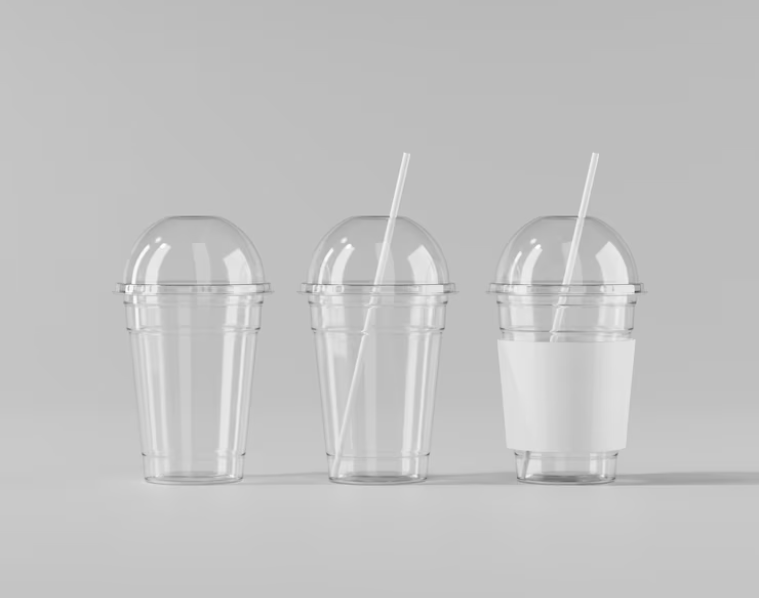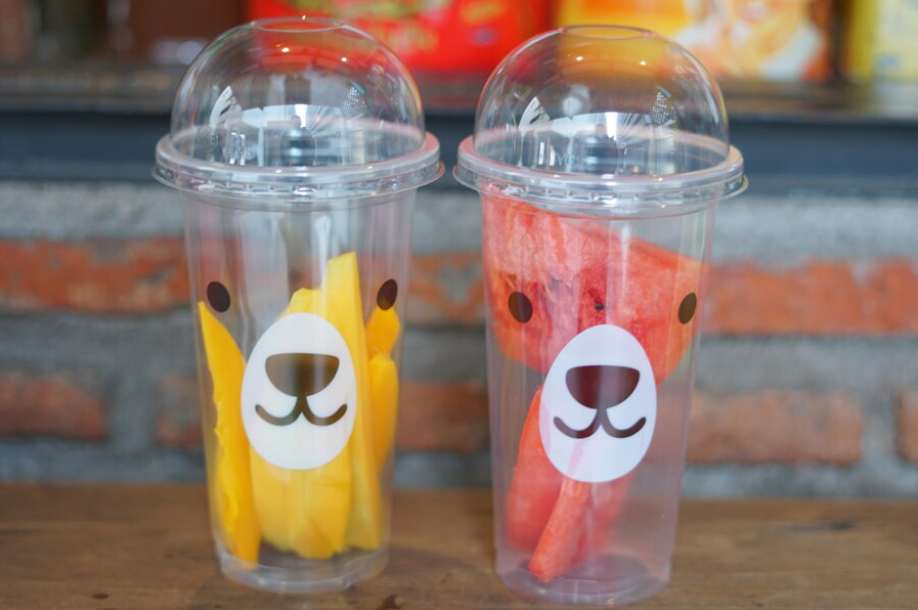
Inquiry Now
PET Cups VS PP Cups: Which is better?
Many buyers search for “PET vs polypropylene” or wonder about “PP vs PET plastic cups” to find the right option. In this blog, we'll compare PET and PP plastics, weigh the pros and cons, and finally answer: PET Cups vs PP Cups — Which is better?

Plastic cups come in a variety of forms, catering to different needs and preferences. The three primary categories are:
- Plastic Cups (Manufactured from Fossil Fuels): These cups, crafted from polymers derived from fossil fuels like petroleum, are the most widespread choice in the market. They offer convenience and reliability, being the go-to option for various beverage-serving needs.
- Biodegradable Plastic Cups: Designed to degrade naturally when disposed of correctly, biodegradable plastic cups contribute to environmental sustainability. This category aligns with the growing demand for eco-friendly alternatives, emphasizing responsible disposal practices.
- Plastic Composting Cups: These cups undergo an industrial transformation process, turning them into organic fertilizer. This innovative approach contributes to reducing waste and promoting a circular economy, showcasing the commitment to environmental responsibility.
Plastic cups come in various forms, but two of the most common types are Polyethylene Terephthalate (PET) and Polypropylene (PP). PET is known for its clarity and is often used for clear cups, while PP, with its sturdiness, is frequently chosen for opaque containers.
Pros and Cons of PET Plastic
Polyethylene Terephthalate, commonly known as PET plastic, boasts several advantages. It is lightweight, making it easy to carry around, and is transparent, allowing the contents to be easily visible. Additionally, PET is recyclable, contributing to environmental sustainability. However, it's essential to note that PET does have its drawbacks. It may not be suitable for hot beverages, as it has a lower heat resistance compared to some other plastics. Moreover, it may not be as sturdy as some alternatives.
What is the Difference Between PET and PP Plastic Cups?
Many people looking for disposable cups specifically compare “pp vs pet” or “polypropylene vs pet” to understand which material suits hot or cold drinks. Understanding the disparities between Polypropylene (PP) and Polyethylene Terephthalate (PET) plastics sheds light on the unique features that make each type suitable for different applications.
Polypropylene (PP) Cups
These are often referred to simply as “PP plastic cups” or “PP cups”, especially in the food-service industry.
- Versatile and Sturdy: PP cups are a popular choice for disposable cups due to their versatility and durability.
- Exceptional Clarity: Known for their outstanding clarity, PP cups allow consumers to see the contents clearly, making them ideal for vibrant or layered drinks.
- Heat Resistance: PP cups can handle both hot and cold beverages, making them a staple in the foodservice industry.
- Strength: Sturdy and shatter-resistant, PP cups are a dependable choice in busy establishments, ensuring durability to prevent accidents and spillage.
- Recyclability: Generally recyclable, PP cups contribute to environmental friendliness as recycling programs increasingly accept PP plastics.
- Leak Resistance: Designed to prevent leaks and spills, PP cups are suitable for a variety of drinks, including carbonated beverages.
Polyethylene Terephthalate (PET) Cups
Consumers sometimes search for terms like “pet vs pp plastic” when deciding on clear cold-drink cups.
- Clear and Lightweight: PET cups, like PP cups, offer remarkable clarity, allowing the contents to shine through. Their lightweight nature makes them advantageous for transportation and handling, often chosen for events and gatherings.
- Recyclability: Widely accepted for recycling, PET cups can be transformed into various products, including new PET containers and fiber for clothing.
- Crack Resistance: PET cups are less prone to cracking compared to some other plastic cups, providing a reliable option for a variety of beverages.
- Cost-Effective: Often cost-effective, PET cups are a practical choice for businesses requiring large quantities of cups.
PET’s clarity and recyclability have also fueled its role in the global takeaway boom—see How PET Cups Are Shaping the Takeaway Culture in 2025 for recent insights.
When it comes to the showdown between PET and PP cups, it ultimately depends on your needs. If you prioritize clarity and recyclability, PET cups are the way to go. They are perfect for cold beverages and offer a crystal-clear view of the contents. On the other hand, if durability and heat resistance are crucial, PP cups are the better option. These opaque cups are ideal for hot drinks and situations where sturdiness is paramount.
How to Identify PP Plastic?
Identifying Polypropylene plastic is easier than you might think. PP plastic often comes with a "5" recycling code, denoting its classification. Additionally, PP is known for its semi-rigid feel and resistance to chemicals. If you're in doubt, check for the recycling code and feel the texture of the plastic.
How to Identify PET Plastic?
Polyethylene Terephthalate, or PET plastic, is recognizable by its clarity and smooth texture. It is commonly associated with a "1" recycling code. PET is also known for being lightweight, making it an excellent choice for disposable beverage containers. When in doubt, check for the recycling code, and if the plastic is transparent and lightweight, chances are it's PET.
Frequently Asked Questions
What is the difference between PP cup and PET cup?
PP cups tolerate higher heat and are sturdier, while PET cups provide superior clarity for cold beverages.
Which is better, PET or PP?
Choose PET for crystal-clear cold drinks; choose PP for durability and hot liquids.
Is PP or PET more expensive?
Costs vary by region, but PET is often slightly cheaper in large orders.
Are PET cups safe?
Yes, PET is food-grade and widely recycled, but avoid high-heat liquids.
Can you use a PP cup for hot water?
Yes. PP cups handle boiling water and hot coffee.
What does PP mean on plastic cups?
PP stands for Polypropylene, a strong, heat-resistant plastic.
What does “PET cup” mean?
A cup made from Polyethylene Terephthalate, known for clarity and light weight.
Conclusion
As we navigate the choices between PP vs PET plastic cups, it's crucial to consider individual needs and priorities. Whether you opt for the clarity of PET or the sturdiness of PP, the decision should align with your specific requirements. In this landscape, Jinkai emerges as a leader, offering PET cups and PET lids that blend functionality with environmental consciousness. As we continue to innovate and uphold our commitment to excellence, Jinkai remains dedicated to providing the best in PET cups, ensuring a clear and sustainable choice for all your disposable tableware needs.

